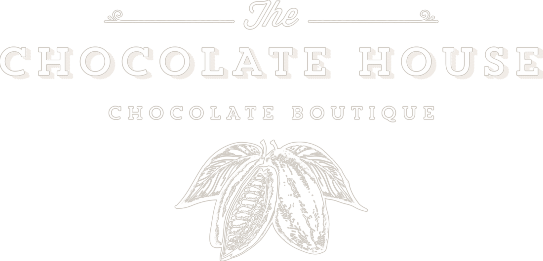SWEET CACAO: BEHIND THE NAME
The name of this collaborative candle is based on the research spearheaded by Dmitri Beliaev, Albert Davletshin, and Alexandre Tokovinine in 2010. In their findings, the team described a funerary vessel found in the tomb of Yax Nuun Ahiin I (379-404 CE), a Mayan ruler of Yax Mutal (known today as Tikal, in the Petén Department of Guatemala), which bears the hieroglyphic inscription of “tzah kakaw” (“sweet cacao,” in English). Without precision of what sweetness meant in this context, the myriad of possibilities speaks to the sophistication of the Mayan—and border Mesoamerican —cultural and economical practices.
ANCIENT RITUALS
Much is known today how cacao’s value captivated the interest of Spanish Conquistadors, puzzled the mind of early Catholic missionaries, and, ultimately, mesmerized the taste of European courts. Nonetheless, Sweet Cacao recreates the senses of a much earlier time, when cacao had a polyvalent meaning among Ancient Mesoamerican Peoples; from a crop destined to make fanciful concoctions or a form of currency, to a venerated staple in religious rituals and the Ancient Mesoamerican worldview.
Sweet Cacao is a testament to colonial narratives that birthed the contemporary storytelling of chocolate, cacao’s most popular contemporary byproduct. By going back to the early usage of the crop, our candle reveals little known sensory notes that served as a prominent cultural cornerstone. While we cannot separate cacao from a set of complex ritualistic traditions of the Ancient Americans, there is ample evidence of how cacao played an important part in the cosmovision of many Ancient Americas civilization, such as those described by Spanish missionaries in the Popol Vúh (collected by Francísco Ximénez from the Kʼicheʼ people) or the Florentine Codex (compiled by Bernardino de Sahagún from Náhua craftsmen and ritespeople.) Topics related to the past and present use continue to be studied by a plethora of multinational scholars.
This fascinating history—of cacao and chocolate—continues to change among the modern nation-estates of Mesoamerica; a region shared between central and southern México, Guatemala, Belize, Honduras, El Salvador, Nicaragua, and western Costa Rica. While for us a chocolate bar might be a simple choice in between dark or milk, the Mesoamercian menu offers more than fifty drinks and plenty more foodstuffs that trace their origin to the halls of Tikal or the cenotes of Chichen Itza.
SWEET CACAO: BEHIND THE NAME
The name of this collaborative candle is based on the research spearheaded by Dmitri Beliaev, Albert Davletshin, and Alexandre Tokovinine in 2010. In their findings, the team described a funerary vessel found in the tomb of Yax Nuun Ahiin I (379-404 CE), a Mayan ruler of Yax Mutal (known today as Tikal, in the Petén Department of Guatemala), which bears the hieroglyphic inscription of “tzah kakaw” (“sweet cacao,” in English). Without precision of what sweetness meant in this context, the myriad of possibilities speaks to the sophistication of the Mayan—and border Mesoamerican —cultural and economical practices.
SMELL
In creating Sweet Cacao, KLEIO and FCCI strived to recreate the aromas of cacao in Ancient Mesoamerica.
Inspired by the many heritage syncretic traditions that are currently in vogue in
Mesoamerica and beyond, the aromas in this candle are representative of ingredients and traditions of times past, on one hand, beverage staples such as fermented cacao and dried vanilla pots, on the other, aromatic elements that accompanied religious rites like copal incense. You may wonder about the absence of sugar—or any sweetener, for that matter—since the name of the candle suggests something different. It was not until the Spanish intervention that sugarcane appeared in the fertile Mesoamerican landscape. The sweetness in the dishes or drinks that Yax Nuun Ahiin I and his lineage might have had access came from the natural aromas and taste of the ingredients in a cacao-based preparation: fermented cacao, annatto seed, flowers, honey, among others.
The sensory formula in Sweet Cacao represents two worlds. One that stands in ruins and perpetual peace: from the Tikal National Park (Guatemala) to the Archeological Compound of Teotihuacan Pyramids (México), or from the Joya de Ceren Archaeological Site (El Salvador) to even the Chaco Culture National Historical Park (United States). The other one, very much alive, from the morning markets in Mexico City (México) or San Salvador (El Salvador), sipping atoles champurrados o de elote, to the cultural representations of Día de Muertos in Chichicastenango (Guatemala) and San Juan Chamula (México), where the dead will visit their rememberance altars to find their favorite earthly treats, sometimes a spicy mole negro or a refrezing pozol.
KLEIO's Sweet Cacao candle features fragrance notes of Ancient Cacao, chocolate, Mesoamerican vanilla bean, and Copal resin.
$42.00
In stock

Store Hours:
Monday 12:00-18:00 Tuesday 12:00-18:00 Wednesday 12:00-18:00 Thursday 12:00-18:00 Friday 12:00-19:00 Saturday 12:00-19:00 Sunday 12:00-18:00
Store will be closed on Dec.25, 26, Jan.1st, and 2nd.
© 2021 Chocolate House D.C. • All Rights Reserved